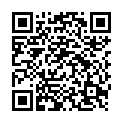|
|
|
| Module code: E105 |
|
3V+1U (4 hours per week) |
|
5 |
| Semester: 1 |
| Mandatory course: yes |
Language of instruction:
German |
Assessment:
Written examination
[updated 10.03.2010]
|
E105. Biomedical Engineering, Bachelor, ASPO 01.10.2011
, semester 1, mandatory course, course inactive since 28.11.2013
E105 Electrical Engineering, Bachelor, ASPO 01.10.2005
, semester 1, mandatory course
|
60 class hours (= 45 clock hours) over a 15-week period.
The total student study time is 150 hours (equivalent to 5 ECTS credits).
There are therefore 105 hours available for class preparation and follow-up work and exam preparation.
|
Recommended prerequisites (modules):
None.
|
Recommended knowledge:
None
[updated 10.03.2010]
|
Recommended as prerequisite for:
E402 Electronics II
E501 Microprocessors I
E514 Digital Signal Processing
[updated 12.03.2010]
|
Module coordinator:
Prof. Dr. Benedikt Faupel |
Lecturer:
Prof. Dr. Benedikt Faupel
[updated 10.03.2010]
|
Learning outcomes:
Students will acquire the skills and techniques to understand simple digital circuits and to describe such circuits using Boolean algebra. They will also learn systematic approaches to digital circuit design that will enable them to create and fabricate circuits of practical value. The fundamentals taught in this course will allow the students to teach themselves more advanced aspects of electronics and computer technology.
The methods learnt in this module provide a solid foundation for students taking more advanced modules in programming and electronics.
[updated 10.03.2010]
|
Module content:
1.Introduction and fundamentals of digital technology
1.1 Number systems (decimal, binary, octal, hexadecimal)
1.2 Adding and subtracting binary numbers (method of complements)
1.3 Fundamental aspects including the mathematical description of digital
control systems
1.4 Introduction and application of the z-transform
1.5 Functional description and representation of elementary digital transfer
elements
2.Boolean algebra and circuit analysis
3.Circuit synthesis
3.1 Disjunctive and conjunctive normal forms
3.2 Graphical circuit synthesis (Karnaugh diagrams)
4.Families of circuits
5.Memory components
5.1 The structure and operating principles of flip-flops
5.2 Unclocked flip-flops
5.3 Clocked flip-flops
5.4 Edge-triggered flip-flops
5.5 Characteristic equation
6.Binary codes
7.Counters and frequency dividers
7.1 Asynchronous counters
7.2 Synchronous counters
7.3 Frequency dividers
8.Digital selector and connector circuits
9.Registers and memory circuits
10.D/A and A/D converters
11.Computing circuits
11.1 Half-adders, full adders
11.2 Subtractor circuits
11.3 Multiplier circuits
12.Introduction to automata theory
12.1 Moore & Mealy automaton
13.Introduction to DIGSIM
[updated 10.03.2010]
|
Teaching methods/Media:
Lecture notes, circuit simulations (DIGSIM), video projector
[updated 10.03.2010]
|
Recommended or required reading:
Beuth, K.: Digitaltechnik; Elektronik Band 4, Vogel Verlag, 2001
Urbanski,K; Woitowitz, R.: Digitaltechnik. Ein Lehr- und Übungsbuch, Springer Verlag, 2000
Lipp, M. Grundlagen der Digitaltechnik. Oldenbourg Verlag, München, 2002
Leonhardt, E.: Grundlagen der Digitaltechnik. Carl Hanser Verlag, München, 1982
[updated 10.03.2010]
|


